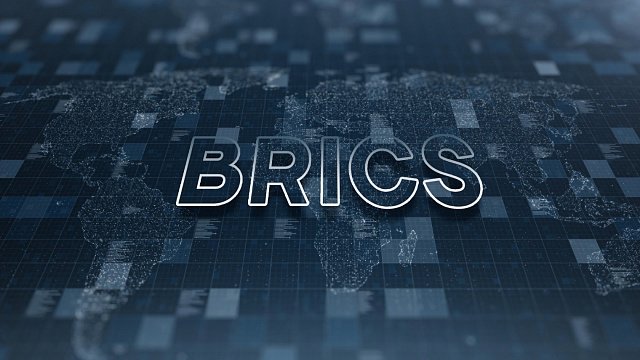16.10.24
16:45
BRICS Expansion: accelerating economic growth in Global South
The article describes how BRICS boosts Global South economies
This article was provided by Duane Dizon, expert on Strategic and Crisis Communications of International Digital Economies Association (iDEA).
With BRICS recent expansion to include Egypt, Ethiopia, Iran, Saudi Arabia, and the UAE, BRICS now represents roughly 45 per cent of the world’s population and accounts for 28 per cent of global exports. This expansion aims to amplify the voice of developing nations by creating a multipolar group where emerging economies can thrive.
The 2024 BRICS+ summit in Kazan, led by Russia, marks a defining moment as more countries, such as Cuba, Serbia, and Azerbaijan, express interest in joining BRICS to leverage its flexibility, collective resources, and infrastructure-focused financial system. Here’s how the BRICS enlargement strengthens the position of developing nations across economic, financial, and geopolitical domains.
Why BRICS matters for developing regions
BRICS provides developing countries pathways for economic growth. BRICS allows to prioritise the needs of emerging and developing economies. Countries can join and tailor economic policies of the group to their unique regional needs.
With influential global players like China, Russia, and regional powerhouses like Brazil and South Africa, BRICS represents a substantial share of the world economy. BRICS countries, especially with the addition of new members like Saudi Arabia and the UAE, now produce about 44 per cent of the world’s crude oil. This collective influence is vital for developing regions that seek stability, creating a solid foundation for trade agreements, sustainable development, and security partnerships that can address their unique challenges.
Role of BRICS in Enhancing Economic and Political Influence
New members such as Iran, Egypt, and Ethiopia bring rich resources, emerging markets, and access to new trade routes, further diversifying the BRICS economic base. Collectively, this enlarged BRICS+ group has a greater say in shaping international financial systems, trade regulations, and sustainable development standards. With BRICS’s ability to unify developing countries under common economic objectives, developing nations are empowered to negotiate trade and development deals on a more level playing field.
BRICS leverages collective bargaining to advocate for more equitable resource distribution, climate initiatives, and financial reforms – areas critical for developing countries.
New Development Bank (NDB): Supporting the Global South with Regional Centres and Strategic Projects
A cornerstone of BRICS’ financial independence and commitment to infrastructure development is the New Development Bank (NDB). Founded in 2014 and headquartered in Shanghai, the NDB was designed to prioritise the needs of emerging economies. The NDB uniquely operates with equal financial contributions from each BRICS country, creating a balanced governance structure where developing countries maintain equal influence over the bank’s operations.
NDB Regional Centers and Key Metrics
The NDB has extended its reach by establishing regional offices, or Regional Offices and Centres (ROCs), in key areas to address local project needs:
Africa (2017)
South America (2019)
Eurasia (2020)
South Asia (2022)
These ROCs enhance the NDB’s capacity to respond quickly and efficiently to regional infrastructure requirements. Key metrics showcase the NDB’s impactful approach:
97 projects Approved: From the bank’s inception to December 2023, the NDB has approved 97 projects, primarily in infrastructure, clean energy, and sustainable development sectors;
274 days to Agreement Signing: The average time from project approval to agreement signing demonstrates the NDB’s efficient project execution and commitment to timely development;
8.35 per cent of Resources Allocated to ROCs in 2023: This reflects the NDB’s strategic emphasis on regional development and adaptability to specific project needs.
Major NDB-Financed Projects for the Global South
Some of the transformative projects funded by the NDB include:
Suez Wind 1.1 GW Project, Egypt: Aiding Egypt’s goal to achieve a 42 per cent renewable energy mix by 2030, this wind farm project not only bolsters Egypt’s energy independence but positions it as a regional renewable energy leader;
Freight Rail Sector Improvement Program, South Africa: Addressing South Africa’s rail inefficiencies, this program aims to boost export volumes, reduce road congestion, and cut carbon emissions, enhancing the country’s logistics network and global competitiveness.
BRICS, through its inclusive expansion and strategic financial initiatives, exemplifies the growing role of the Global South in shaping global governance. BRICS empowers emerging economies to advance their domestic agendas. With the New Development Bank’s project-centric and regionally adaptive model, BRICS facilitates essential infrastructure projects that drive growth across Africa, South America, Asia, and beyond.
As BRICS continues to expand, it not only strengthens the voices of developing nations but also redefines global cooperation. By emphasising multilateralism and equitable resource distribution, BRICS embodies the aspirations of the Global South to take an active role in addressing climate challenges, trade inequities, and sustainable development. In a multipolar world, BRICS is more than an economic group; it is a transformative movement championing the rise and empowerment of the Global South on the world stage.
Photo: the image was generated by a neural network
Back

